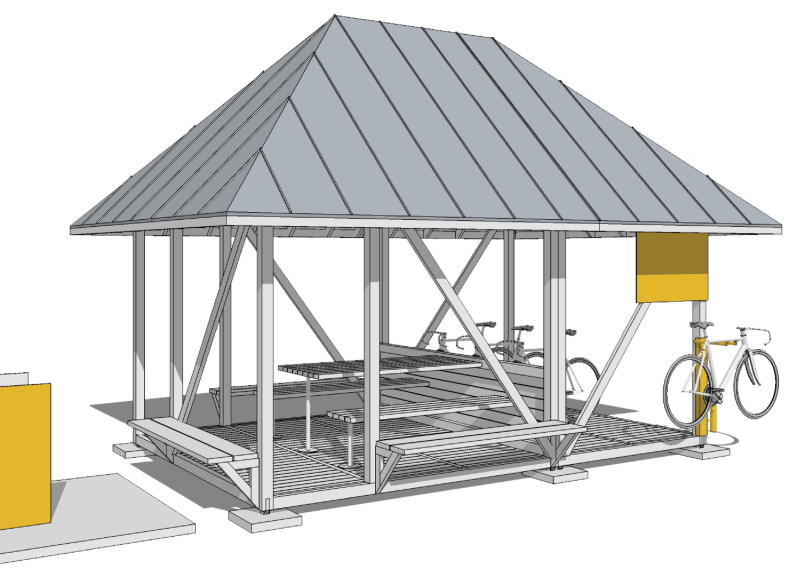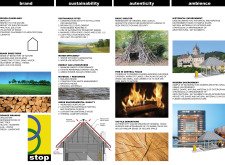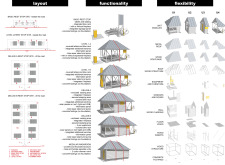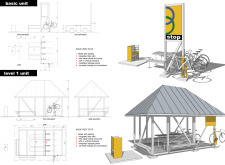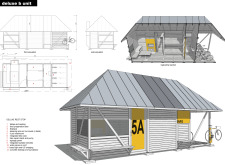5 key facts about this project
The design exemplifies a thoughtful integration of community, functionality, and environmental responsibility. It is situated in a context that respects the surrounding landscape while serving as a multifunctional space that encourages social interaction. The design draws inspiration from the traditional concept of shelter, aiming to create a familiar and welcoming environment for its users.
Conceptual Framework
The project embodies a clear focus on simplicity and practicality. Clean lines and an efficient layout define the space, which maximizes open areas for community engagement. This design promotes interaction among occupants and fosters a connection with nature. It invites users to participate in outdoor activities and raises awareness of their surroundings.
Sustainable Practices
The commitment to sustainability is evident throughout the design. Choosing a brownfield site for development minimizes ecological disruption and reclaims land that has already been utilized. The location near a road belt supports the use of alternative transport options like biking, which helps reduce carbon emissions. The introduction of water-efficient landscaping further emphasizes the design’s approach to resource management, ensuring that overall water consumption remains low.
Integration with Historical Context
Attention to the historical environment is a significant aspect of the design. Its elements blend naturally into the existing setting without overshadowing its character. By arranging architectural features thoughtfully, the design strikes a balance between traditional forms and modern needs. This blend enhances the structure’s visual appeal and establishes it as an important part of the community’s story.
Environmental Quality and User Experience
Indoor environmental quality is prioritized to enhance the comfort of users. Increased ventilation and the selection of low-emitting materials create a healthier indoor atmosphere. Additionally, the tactile qualities of the materials invite engagement, providing a warm and welcoming experience.
The design incorporates large openings that allow sunlight to enter. This creates a dynamic play of light and shadow, which changes throughout the day, lending a sense of liveliness to the interior.


